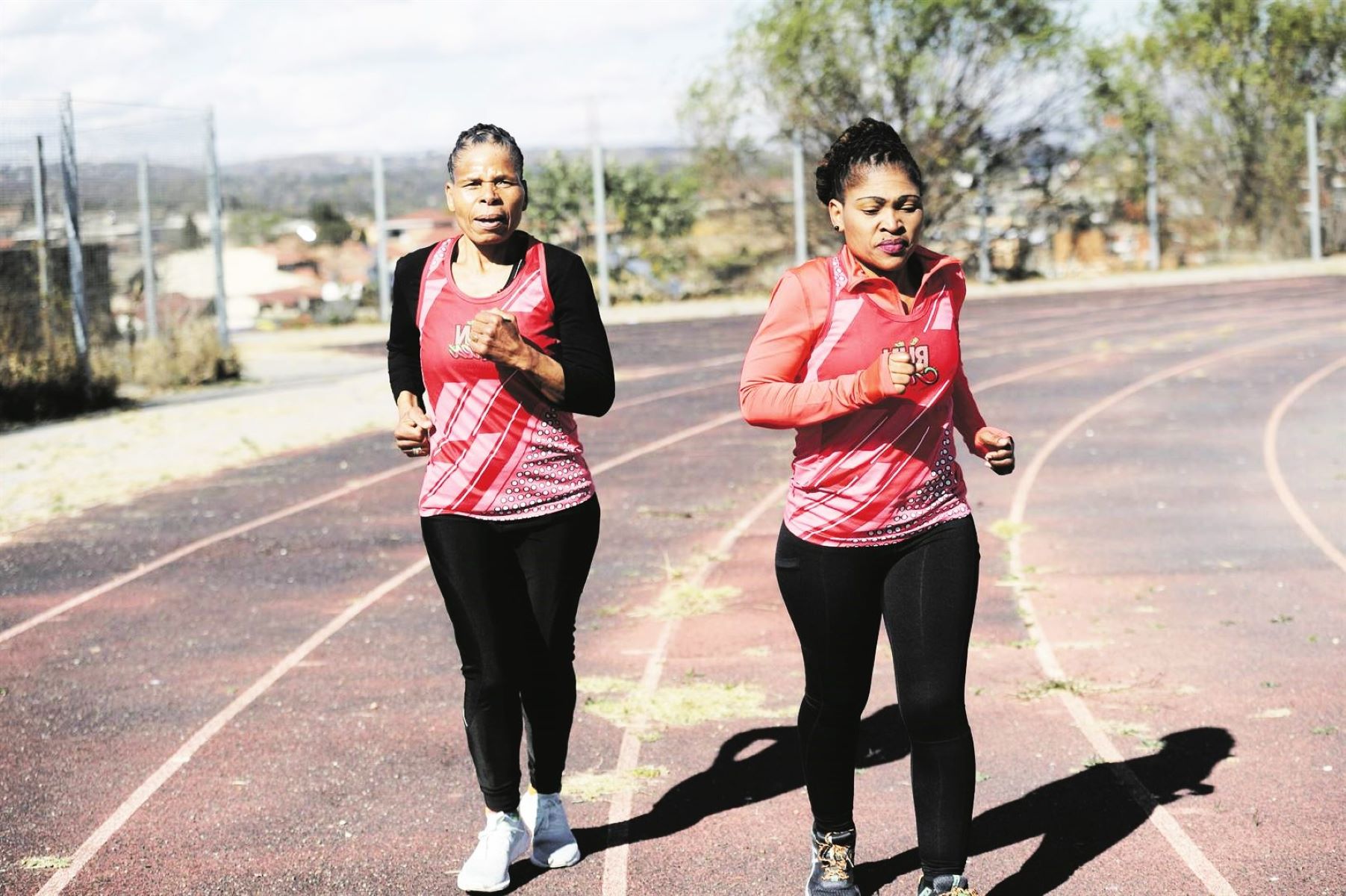Home>Training & Techniques>Deciding Between DNS Or DNF: When To Push Through Or Call It Quits In Running


Training & Techniques
Deciding Between DNS Or DNF: When To Push Through Or Call It Quits In Running
Published: March 5, 2024
Learn when to push through and when to call it quits in running with this guide on deciding between DNS or DNF. Discover essential training & techniques.
(Many of the links in this article redirect to a specific reviewed product. Your purchase of these products through affiliate links helps to generate commission for Therunningadvisor.com, at no extra cost. Learn more)
Table of Contents
Understanding the Difference Between DNS and DNF
In the realm of running, the acronyms DNS and DNF hold significant weight, representing pivotal moments in a runner's journey. DNS stands for "Did Not Start," indicating that a runner was unable to commence the race for various reasons. On the other hand, DNF stands for "Did Not Finish," signifying that a runner began the race but, for reasons such as injury, exhaustion, or other factors, was unable to complete it.
Understanding the distinction between DNS and DNF is crucial for both novice and seasoned runners. While DNS implies a lack of initiation, DNF denotes an incomplete endeavor. The decision to DNS or DNF can be influenced by a myriad of factors, including physical condition, mental fortitude, and external circumstances.
DNS and DNF are not merely symbols of defeat; rather, they serve as valuable learning opportunities. A DNS may result from a prudent choice to prioritize one's well-being, while a DNF can stem from unforeseen challenges that test a runner's resilience. Both outcomes underscore the unpredictable nature of running and the importance of adaptability in the face of adversity.
By recognizing the nuances between DNS and DNF, runners can cultivate a deeper understanding of their own limitations and strengths. This awareness fosters a sense of empowerment, enabling runners to make informed decisions that align with their well-being and aspirations. Whether opting for a DNS or encountering a DNF, each experience contributes to a runner's growth and resilience, shaping their journey in profound ways.
In the dynamic landscape of running, the distinction between DNS and DNF serves as a reminder of the multifaceted nature of the sport. It underscores the significance of embracing both the triumphs and setbacks that accompany the pursuit of personal and athletic goals. Ultimately, understanding the difference between DNS and DNF empowers runners to navigate their running endeavors with mindfulness, resilience, and a profound appreciation for the journey itself.
Read more: Deciding When To Skip A Race: A Guide To DNS
Factors to Consider Before Deciding to Push Through
Before making the pivotal decision to push through a challenging race, runners must carefully assess a multitude of factors that can significantly impact their physical well-being and mental resilience. These considerations play a crucial role in determining whether to persevere or exercise prudence in the face of adversity.
Physical Condition
Assessing one's physical state is paramount when deliberating whether to push through a race. It is essential to gauge the severity of any discomfort, pain, or injury that may compromise overall well-being. Runners must discern whether the physical strain is within the realm of manageable discomfort or if it poses a risk of exacerbating an existing injury. Additionally, evaluating hydration levels, energy reserves, and overall physical capacity is vital in making an informed decision.
Mental Resilience
The mental fortitude required to endure a challenging race should not be underestimated. Runners must introspect and evaluate their mental state, considering factors such as determination, focus, and emotional well-being. It is crucial to discern whether the mental strain of pushing through will yield a sense of accomplishment or potentially lead to detrimental emotional and psychological repercussions.
External Conditions
Assessing the external environment and race conditions is imperative when contemplating whether to push through. Factors such as extreme weather, unsafe course conditions, or inadequate support can significantly impact a runner's ability to safely and effectively complete a race. Evaluating these external elements is essential in making an informed decision that prioritizes personal safety and well-being.
Long-Term Implications
Considering the potential long-term implications of pushing through a challenging race is crucial. Runners must weigh the immediate gratification of completing the race against the potential consequences of exacerbating injuries or compromising future training and racing endeavors. It is essential to adopt a holistic perspective that encompasses both short-term and long-term well-being.
Support System
The presence of a supportive network, including fellow runners, race officials, and medical personnel, can influence the decision to push through. Assessing the availability of support and assistance in the event of physical or emotional distress is vital in ensuring a safe and informed decision.
Personal Goals and Aspirations
Aligning the decision to push through with personal goals and aspirations is fundamental. Runners must evaluate whether persevering through the race aligns with their long-term objectives and contributes positively to their overall growth and development as athletes.
By meticulously considering these factors, runners can make informed decisions that prioritize their well-being and align with their aspirations, ultimately fostering a sense of empowerment and resilience in the face of adversity.
Signs That Indicate It's Time to Call it Quits
Recognizing the signs that indicate it's time to call it quits during a race is crucial for safeguarding one's well-being and long-term athletic pursuits. While the determination to push through challenges is commendable, there are instances where prioritizing personal safety and overall health takes precedence. Understanding the following signs can empower runners to make informed decisions that align with their best interests.
Persistent, Unmanageable Pain
Experiencing persistent and unmanageable pain during a race is a clear indication that it may be time to call it quits. Ignoring debilitating pain can exacerbate injuries and lead to long-term consequences. It is essential to discern between manageable discomfort and pain that poses a significant risk to one's well-being.
Dizziness, Lightheadedness, or Disorientation
Symptoms such as dizziness, lightheadedness, or disorientation should not be overlooked during a race. These signs may indicate dehydration, heat exhaustion, or other underlying health concerns. Prioritizing immediate medical attention and withdrawing from the race is imperative when experiencing these symptoms.
Inability to Maintain Proper Form and Technique
A noticeable decline in running form and technique, often accompanied by fatigue and physical strain, can signal the need to call it quits. Straining to maintain proper form increases the risk of injury and diminishes overall performance. Recognizing this decline and exercising prudence is essential for preventing potential harm.
Overwhelming Mental Distress
Overwhelming mental distress, characterized by extreme anxiety, panic, or emotional turmoil, warrants serious consideration of calling it quits. Mental well-being is paramount, and persisting through a race while experiencing severe emotional distress can have detrimental effects. Prioritizing mental health by withdrawing from the race is a courageous and responsible decision.
Severe Exhaustion and Fatigue
Severe exhaustion and fatigue that significantly impede one's ability to continue running are compelling signs to consider calling it quits. Pushing the body beyond its limits can lead to severe physical repercussions and compromise long-term athletic endeavors. Acknowledging the body's signals and prioritizing rest and recovery is essential.
Inability to Meet Time Cut-Offs
In races with designated time cut-offs, an inability to meet these benchmarks may necessitate the decision to call it quits. While falling short of time constraints can be disheartening, it is crucial to respect race regulations and prioritize safety. Adhering to time cut-offs ensures a structured and safe race environment for all participants.
Loss of Motivation and Enjoyment
Experiencing a profound loss of motivation and enjoyment during a race can be a telling sign that it's time to call it quits. Running is a deeply personal pursuit, and when the intrinsic joy and motivation diminish, it may be more beneficial to withdraw from the race and reassess one's physical and emotional state.
By recognizing these signs and acknowledging the importance of prioritizing well-being, runners can make informed decisions that uphold their long-term health and resilience. Embracing the courage to call it quits when necessary is a testament to an individual's commitment to self-care and responsible athletic conduct.
Strategies for Overcoming Mental and Physical Challenges
Navigating the intricate terrain of running entails confronting a myriad of mental and physical challenges that demand resilience, adaptability, and strategic coping mechanisms. When faced with formidable obstacles during a race, runners can employ a range of strategies to overcome these challenges and emerge stronger. These strategies encompass both mental fortitude and physical resilience, fostering a holistic approach to surmounting adversities.
Mental Resilience
-
Mindfulness and Visualization: Cultivating mindfulness and employing visualization techniques can bolster mental resilience during challenging races. By focusing on the present moment and visualizing successful outcomes, runners can harness a positive mindset that mitigates anxiety and fosters determination.
-
Positive Self-Talk: Engaging in positive self-talk serves as a powerful tool for combating self-doubt and adversity. Affirming one's capabilities and resilience can instill a sense of confidence and fortitude, enabling runners to navigate mental hurdles with steadfast resolve.
-
Adaptive Goal Setting: Embracing adaptive goal setting involves acknowledging and adjusting goals based on real-time circumstances. This flexible approach empowers runners to recalibrate their objectives in response to unexpected challenges, fostering a sense of control and empowerment.
Physical Resilience
-
Pacing and Energy Management: Implementing effective pacing and energy management strategies is pivotal for sustaining physical resilience. By conserving energy and maintaining a steady pace, runners can mitigate the risk of premature exhaustion and optimize their endurance throughout the race.
-
Hydration and Nutrition: Prioritizing adequate hydration and nutrition is essential for bolstering physical resilience. Maintaining optimal hydration levels and fueling the body with nourishing nutrients are fundamental components of sustaining energy levels and mitigating the impact of physical exertion.
-
Strategic Rest and Recovery: Integrating strategic rest and recovery intervals into the race plan is instrumental for preserving physical resilience. By recognizing the body's need for periodic rest, runners can optimize their performance and minimize the risk of overexertion.
Holistic Approach
-
Adaptability and Flexibility: Embracing adaptability and flexibility as overarching principles enables runners to navigate mental and physical challenges with agility. This holistic approach fosters a dynamic mindset that accommodates unforeseen circumstances and promotes resilience in the face of adversity.
-
Self-Compassion and Acceptance: Cultivating self-compassion and practicing self-acceptance are integral components of a holistic approach to overcoming challenges. Acknowledging one's limitations with compassion and accepting the ebb and flow of the racing experience fosters a balanced and resilient mindset.
By integrating these strategies into their racing endeavors, runners can cultivate a comprehensive toolkit for overcoming mental and physical challenges. This multifaceted approach empowers individuals to navigate the complexities of running with resilience, adaptability, and a profound sense of self-awareness.
The Importance of Listening to Your Body and Mind
The symbiotic relationship between the body and mind is a cornerstone of holistic well-being, particularly in the context of running. The ability to attentively listen to the signals and cues emanating from both the body and mind holds profound significance, serving as a guiding compass that informs crucial decisions and fosters a harmonious balance between physical and mental health.
Listening to the Body:
Attentively tuning into the body's physical manifestations is an essential practice for runners. Sensations of discomfort, pain, fatigue, and overall physical strain convey invaluable insights that demand acknowledgment and respect. By heeding these signals, runners can proactively address potential issues, mitigate the risk of injury, and optimize their performance. Furthermore, attentive listening to the body cultivates a heightened sense of self-awareness, enabling runners to discern between manageable discomfort and indicators of potential harm. This discernment empowers individuals to make informed decisions that prioritize their physical well-being, ultimately contributing to sustained athletic pursuits and long-term health.
Listening to the Mind:
The mind serves as a reservoir of emotional, psychological, and motivational cues that profoundly influence a runner's experience. Attentively listening to the mind involves acknowledging and processing emotions, thoughts, and mental states that arise during a race. By embracing this practice, runners can navigate the intricate landscape of mental resilience, recognizing the ebb and flow of motivation, focus, and emotional well-being. This heightened awareness empowers individuals to address mental hurdles with compassion and resilience, fostering a balanced and sustainable approach to running.
Harmonizing Body and Mind:
The synergy between attentive listening to the body and mind culminates in a harmonious integration of physical and mental well-being. This symbiotic relationship enables runners to make informed decisions that honor the interconnected nature of their physiological and psychological states. By harmonizing the cues from the body and mind, individuals can cultivate a holistic approach to running that prioritizes self-care, resilience, and sustainable athletic endeavors.
In essence, the importance of listening to the body and mind transcends the realm of running, permeating various facets of personal well-being and athletic pursuits. This practice embodies a profound commitment to self-awareness, self-care, and responsible decision-making, ultimately fostering a resilient and balanced approach to running that resonates far beyond the finish line.












